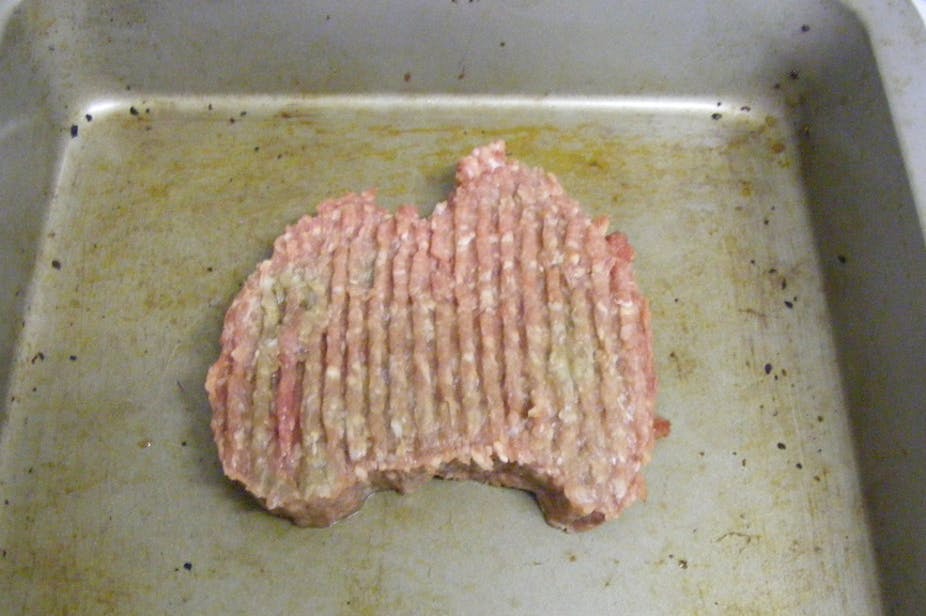New footage recently aired on ABC has again brought to our attention the plight of cattle in Indonesian abattoirs. Scenes of cattle being poked, stabbed, and slaughtered without appropriate equipment has again caused emotional distress and moral outrage. In some cases it even seems that some cattle are being cut-up while still vocalising: while they are still alive, sentient, and in pain.
What is curious is the repeated use of the term “Australian cattle”. We appear to be particularly concerned about whether the cattle are Australian!
There is good reason for this. The live cattle trade with Indonesia was reinitiated on the basis that our Australian cattle would be assured of better treatment. As Australians we were collectively upset by the idea that we sent live cattle overseas to be brutalised at abattoirs unrestricted by our own animal welfare standards.
In response to the recent footage, the Federal Department of Agriculture is now investigating whether the cattle are Australian and if the slaughterhouses are part of its approved abattoir system. The new footage has implications for the assurances provided to Australians that our cattle would be slaughtered using processes that are more aligned with our moral conscience.
Still, what remains interesting is the moral outrage of Australians about the treatment of Australian cattle. What of the Indonesian cattle, or cattle imported from other parts of the planet? Why are we so concerned that the brutality we see is not happening to our own cattle?

I would suggest there are three reasons for this. All three reveal some interesting insights into self-serving biases evident in our ethical reasoning.
First, the moral outrage of Australians is focused on Australian cattle because we have direct responsibility for their export. That is, we are sending them to these abattoirs and therefore feel a sense of responsibility for what happens to them. Put another way, we feel that what is happening to these cattle is somewhat within our control.
On the surface this seems reasonable. It does suggest, however, that we are mostly outraged over the fact that we have been implicated in this heinous treatment of animals. That is, we are upset that our hands appear to be dirty.
This may be true to some extent, but it does not capture what appears to be really upsetting people. What triggers our emotional response to this footage is seeing the brutalisation of a living sentient creature capable of feeling pain. We are morally outraged that sentient creatures should be harmed in these ways.
This brings us to the second reason we may be especially interested in Australian cattle. It’s just too damn hard to be concerned for all cattle everywhere: it’s just overwhelming. We are mostly interested in Australian cattle because we feel capable of doing something to help them. That is, our moral outrage is largely directed by our own perceived capacity to achieve change.
This makes sense. Why not focus our moral outrage on things that we feel we have some control over? It also indicates, however, that our ethical reasoning is largely shaped by our own need to feel in control of negative outcomes. Indonesian cattle are outside of our control and therefore we are less focused on their brutalisation.

Perhaps being concerned over things we have no capacity to change is just too disturbing?
There may, however, be another reason that we are especially concerned for Australian cows. We are concerned simply because they are our cows. Social psychologists have studied this phenomenon for the past 40 years in humans. People allocate more resources to their own groups, view their own groups more positively and are more likely to help their own group members. Indeed people even view members of their own groups as possessing more “human” qualities – qualities which make them more morally worthy and of greater moral concern.
Perhaps these same processes apply to animals. When they are our animals we see them differently: we are more concerned about their welfare and more likely to respond to their needs.
While all three of these biases suggest our ethical reasoning may be far from objective, they also suggest that animals (at least sometimes) may be subject to the same biases in moral thinking as are other humans. This is perhaps encouraging for animals to some degree.
Psychologising these issues indeed does little for the current plight of animals in Indonesian abattoirs. Gaining insight into how we think about and care for animals does, however, have a range of broader implications. The psychological processes that allow us to overlook the harm brought to animals are the same as those that allow us to overlook harm brought to other humans.
Concern for animal welfare appears to be on the rise. This is a good thing. Expanding our moral circle to include animals not only benefits them, it also means that circle is more likely to include other humans who are different from us.
Still, it does not take much for our moral circle to quickly retract. Economic hard times and limited resources for survival achieve this particularly well: a factor that we should pay close attention to before judging the extent of care and concern paid to animals by those who have fewer resources than ourselves.

